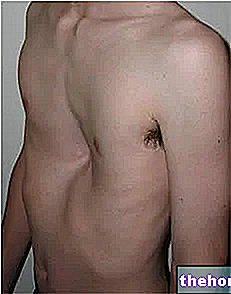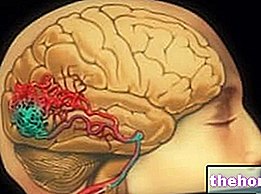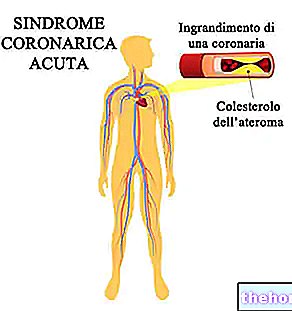The spleen is an organ that can easily undergo rupture due to violent traumas affecting the abdomen or indirectly affecting it. Among all, the spleen is in fact the most frequently injured internal organ in thoraco-abdominal trauma, due to of its intrinsic fragility, of the rich vascularization, of the presence of a long vascular peduncle (artery and lienal vein), and of the connection to the various ligaments that transmit stresses from other organs.
Large splenic injuries transform the rupture of the spleen into a real medical emergency, which requires immediate surgery to stop internal bleeding and save the patient's life. In the case of more superficial trauma, the rupture of the spleen can be treated conservatively, hospitalizing the patient for a few days and observing the evolution of the situation towards a possible spontaneous recovery.
Causes
In the introductory part, we saw how the rupture of the spleen is common as a result of violent trauma affecting the abdomen, such as a car accident, a fall from the motorcycle, a punch during a fight or a penetrating wound (bullet, knife, etc. .).Severe splenic injuries are also common in the case of violent falls from above, on the feet or on the buttocks, traumas which, although not directly affecting the abdomen, have repercussions on it.
There are also circumstances, not so rare, in which the spleen becomes particularly susceptible to rupture, even as a result of modest or insignificant trauma, such as a cough, a sneeze, a retching, an effort to defecate, or a too vigorous palpation of the organ. In general, the risk of spontaneous ruptures or secondary to minimal trauma is high in case of splenomegaly (enlargement of the spleen), especially if severe. Hence the rupture of the spleen becomes more common in the course of some diseases, such as infectious mononucleosis, malaria, schistosomiasis, cirrhosis, haemolytic anemia (e.g. thalassemia), Gaucher's disease, sarcoidosis, hairy cell leukemia, chronic myelogenic leukemia, chronic lymphocytic leukemia, etc. For this reason, in these individuals (eg children with infectious mononucleosis) the practice of contact sports or at high risk of trauma is strongly discouraged by doctors.
Symptoms and Complications
The spleen is located in the left upper quadrant of the abdomen, just below the diaphragm, protected by the last ribs of the left hemithorax; under normal conditions it is the size of a fist. In the presence of a violent trauma of the abdomen, the patient complains of intense pain in this region (left hypochondrium, left supero-lateral quadrant of the abdomen), which radiates to the ipsilateral (left) shoulder and is aggravated by palpation. The abdominal walls appear hyper-contracted and the abdomen distended due to the accumulation of blood in the abdominal cavity; furthermore, internal bleeding gradually leads to a state of hemorrhagic shock, signaled by symptoms such as paleness, anxiety, tachycardia, lightheadedness and confusion. However, the clinical manifestations of splenic rupture do not always occur so early; The bleeding, in fact, may not be immediate but may occur later, with a delay of a few days from the trauma and late onset of the disturbances, even 6-7 days after the accident.
Of course, rupture of the spleen can be isolated or associated with lesions of other organs, which complicate clinical manifestations and prognosis; when there is association with lesions of other organs, the mortality from splenic rupture is high (10-20%), while in the case of an isolated lesion the mortality is around 4%.
Diagnosis and Treatment
The essential diagnostic tools are CT and ultrasound, which confirm the suspicion that emerged from the physical examination of the patient; peritoneal lavage also has an important diagnostic utility (a small catheter, a flexible plastic tube, is introduced into the abdomen to aspirate and analyze the aspirated liquid looking for the presence of blood).
Due to the important vascularization, the rupture of the spleen can cause massive bleeding, with accumulation of blood in the abdominal cavity and the onset of hypovolemic shock up to death. In such circumstances, the immediate surgery of splenectomy (removal of the spleen) can save life to the patient without significant clinical complications.
Compared to the past, thanks to the reassessment of the immune role of the spleen and the risk of severe post-operative infections, splenectomy surgery is now practiced with greater caution. Doctors, in essence, tend to observe the patient to understand if the " hemorrhage is able to stop spontaneously, reserving the intervention for cases where spontaneous healing does not occur. Furthermore, during surgery, when possible, an attempt is made to repair the lesion, for example by applying sutures, or to remove only the part of the spleen affected by the rupture (subtotal or partial splenectomy).




























